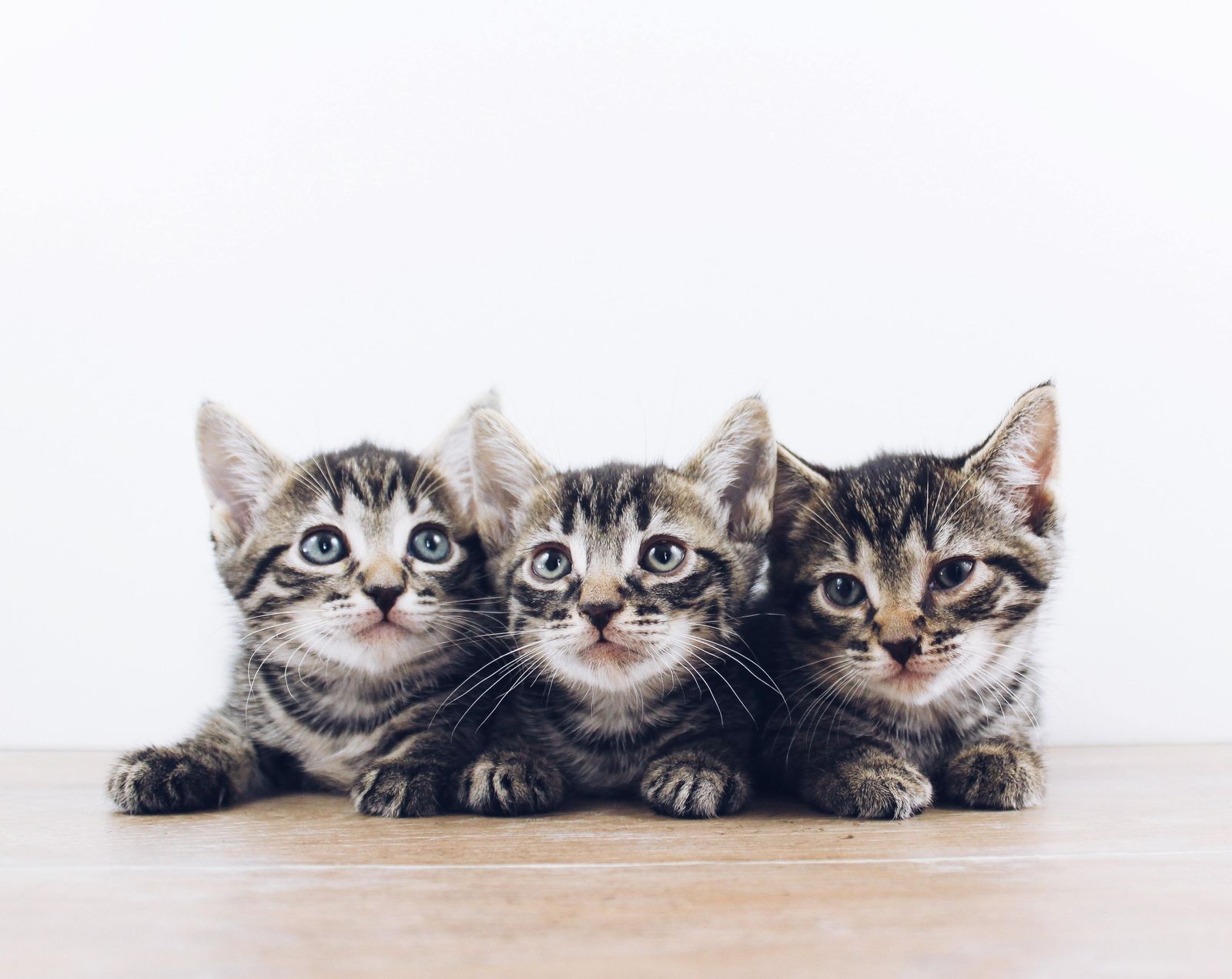Your new kitten checklist

Your life is about to get a lot more cuddly! Whether you’ve already brought home your new bundle of fur or are still planning to adopt, it’s a great time to look into the accessories that come with a kitten. And by “come with a kitten,” we mean everything you’ll want to consider picking up before bringing your new family member home. Your new kitty will appreciate the organization of this list; they may not verbalize it, but you’ll be rewarded in snuggles and purrs.
This is not an exhaustive list. Your new kitten will need a lot of gear and accessories over their life; this list covers the things they will need for the first few days and nights in their new digs.
An adjustable, breakaway collar
Though it might seem odd to get your indoor kitty a collar, it’s worth getting your little bundle of joy used to a collar while they’re under the age of six months. Collars are important for kitten identification. If your indoor kitten escapes into the wild world of the outdoors, or you’re allowing your kitten outside, a clear ID attached to a collar can help the reunification process. Just make sure it’s a breakaway collar to avoid choking.
ID tags & microchip
You want your new kitten to be easily identified. On an ID tag make sure to list your kitten’s name, address, and phone number. ID tags aren’t a replacement for microchips and vice versa. Microchips can only be read by a scanner, and it’s unlikely that your neighbourhood rescuer has one on hand. An ID tag can be read a lot more easily. But microchips are also useful as a backup if the ID tag gets damaged or falls off.
A cozy bed
Before taking to Pinterest, Etsy, or any other creative cat bed resource, you may want to start with a clean cardboard box. Make sure you cut a big enough door for your kitten and then line the box with old sweatshirts or blankets. This way, your new kitten can get used to your smell and their new home. We suggest placing your kitten bed in a corner that doesn’t get that much foot traffic, they like a calm draft-free corner.
Good quality kitten food
The best way to assess the quality of cat food is to read the labels. Like human food, cat food ingredients are listed in decreasing proportional weight. You want the first ingredients to be proteins. Cat food is formulated for different life stages, from new kittens to geriatric cats, so make sure you get one specific to your new kitten. Always offer both wet and dry food, so they’re getting a range of nutrients and extra water. If you’re unsure, this is a great conversation to have with your Vetster vet to determine what food is right for you, your budget and your kitten.
Kitten treats
Similar to human treats, cat treats aren’t always focused on nutrition. Treats should not exceed 10 to 15 percent of a cat’s caloric intake. Also, avoid certain foods like raw meat, human food, and milk. These can upset a kitten’s tummy and digestive tract.
Food and water bowls
This one is for both of you. Once you figure out which water and food bowls will be the easiest to clean and fill, then you can go design happy. You may like water and food bowls with little pink hearts, or maybe you’re looking for something more sleek and modern. It’s up to you. Keep in mind that many cats don’t like their food and water near each other, so you’ll want to spread them out throughout the house (even within the same room is fine). You can also try water fountains, which can encourage healthier drinking habits with notoriously fussy felines.
Stain and odour remover
This is a must to keep the peace in the house. A new kitten means new substances, stains, and odours. Whether it’s accidents or vomit, cleaners and stain removers will put certain new-kitten worries to ease.
Scratching post
Cats love scratching posts to stretch, exercise, and buff their nails. They love to get their scratching on and so it’s important to have a designated post for them to use, otherwise, they’ll just use any piece of furniture you like best. Show your new kitten where their post is so they’ll get used to it. Try next to their bed, so they can have a nice stretch after a snooze.
Toys
Your kitten will want to explore and toys help satiate that curiosity. Always use toys that are designed for cats so they’re nice and safe. Though, be warned, they may act like a toddler and prefer a shoebox to a new and shiny toy. Avoid balls of string, elastics, wire twist ties, and other potentially harmful objects.
Litter box, scoop, and litter
Get a nice and spacious litter box for your little friend, this will prevent litter from being dragged around your place. You’ll want to keep the litter box clean or your cat may not want to use it. Along with regular scooping, clean out the tray with soap and water about once a week. Avoid chemical cleaners. Wear gloves when cleaning out the litter box to avoid human-contractable organisms (like toxoplasmosis).
Carrier
You’re going to need to transport your kitten. Make sure you have a carrying case specifically designed for cats. Your kitten or cat may not love their carrier, so you may want to talk to your vet for best practices. And throw in familiar-smelling soft toys for comfort.
Grooming tools
Your kitten will do a lot of grooming on their own, but it’s nice to get brushed as well. You’ll want a flea comb and a brush that will vary based on the breed, so ask your veterinarian which ones are best suited for your little cutie.
Your virtual veterinarian
Selecting your virtual vet is an important first step to help support the healthy development of your kitten. Depending on how your kitten came to you - whether from a barn, shelter, or breeder - their history is very important to their future health and the care they need. Your vet will be able to help you identify any possible risks of illness or parasites that should be addressed, as well as help you with their required vaccine schedule, timing for spay or neuter, and necessary deworming. This is also a great time to also get advice on how to trim claws, selecting the right litter, and what litter box is best for your pet and your home.
Last but not least, this first appointment is an important one to chat about your kitten’s nutrition. What are they eating now? What were they eating before? Your virtual vet can help identify what food is best for the healthy development of your pet, while knowing what can work for you and your budget. Think of your virtual vet as your go-to pro: they’ll help you to create the best care for your kitten based on their unique needs.




